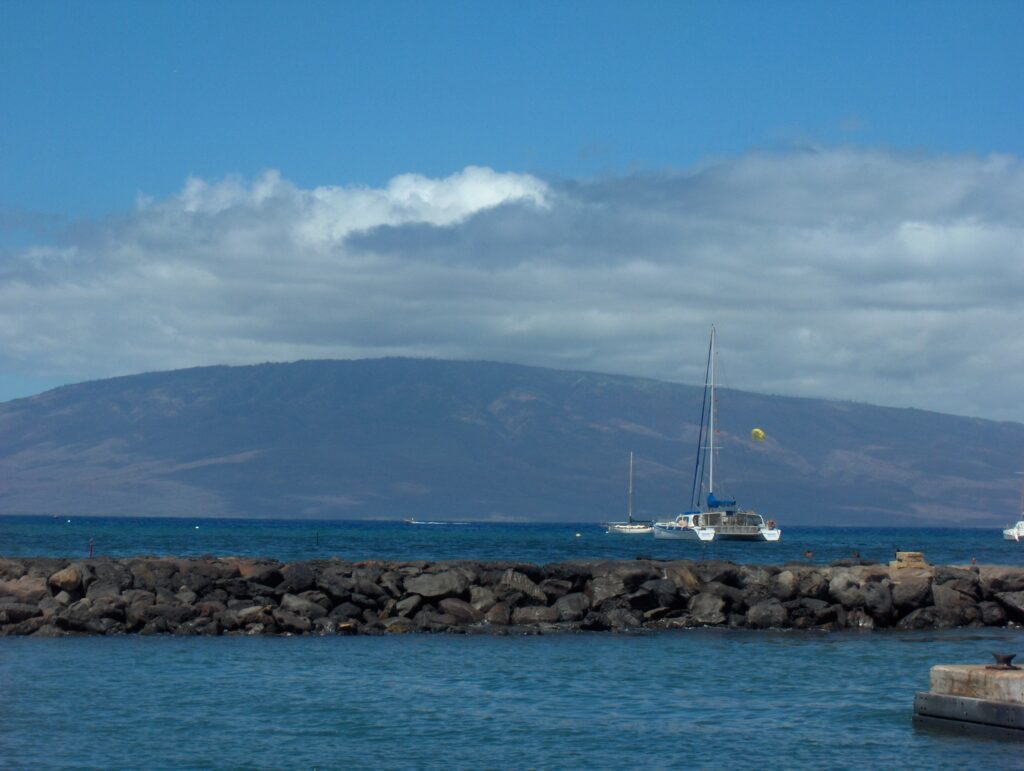We woke before dawn on the second day to see the sunrise at Haleakala, a dormant crater that provides the highest peak in Maui. It sits in Haleakala National Park, and attracts enough visitors that the National Park Service now requires a reservation. The morning we visited, I was caught off guard by the cold at 10,000 feet above sea level before the sun came out. The park is home to five distinct climates–so it was a bit difficult to prepare for it as I had packed for a holiday at Hawaii’s many beaches and did not think to bring a stocking cap and gloves. Nevertheless, that did not detract from the beauty of the experience. The crowd that gathered spoke in hushes until the sun appeared to elicit ooohs and aaaahs. And we were early enough in the trip that a pre-dawn start put us in our normal time zone. There’s some lore about the gods and sunrise at this spot, but none of that was apparent while we visited. We had come to see the beauty of the area as the sun rose over the crater for the day.
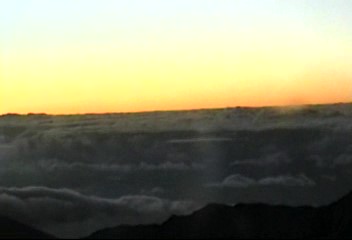
We had dashed there without breakfast, so we asked NPS guides what they recommended, and wound up eating at Grandma’s Coffee House in Kula. Compared to Lahaina, this part of Maui was much more agricultural and slower paced. We had a nice breakfast and saw pet dogs and people going about their days rather than their holidays. We decided we did not have enough time to drive the Road to Hana, the coastal road that circles around the southern and eastern tip of the island and requires an overnight stay to enjoy it. Instead, we headed to Maui Wine at the Ulupalakula Vineyards for a tour and tasting. We stopped to take pictures along the road, which was green and separated by stone walls, reminding us of Ireland of all places. The winery has a colorful past as the place has been a ranch since the 19th century, and has endured many twists and turns in what it produces. It is currently part of a land trust of 18,000 acres designed to prevent over-development on the island. When we visited, the winery produced a variety of grape, raspberry, and pineapple wines and raised elk and cows. Our tour included the drunk tank/jail that is now used as a tasting room. I bought some delicious pineapple wine that never made it back to the mainland.
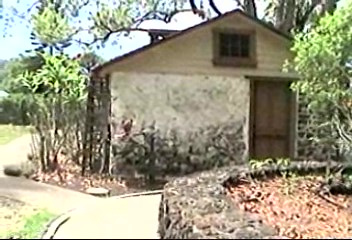
We wandered then, enjoying the the agricultural life on this side of the Maui. We stopped at Ali’i Kula Lavender Farm for tea and lavender scones, and sat out looking over the valley that connects one side of Maui to the other, stretching to the ocean. It was beautiful, peaceful, and delicious, and we speculated about whether the land trusts would hold up to prevent the spread of resorts and condominiums across the valley.
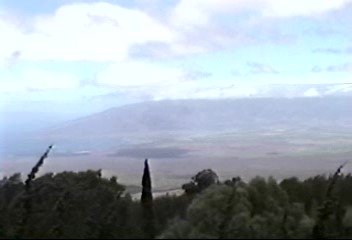
We hiked a bit there, stopping to watch others play in the waterfalls. Maui had been experiencing drought that summer, so the water was not terribly deep at the falls. Many families were at play, and we watched as the young kids jumped up and down from the rocks. As we headed back to our hotel, we encountered beaches for stopping and enjoying the ocean and pulled off for different angles, or to walk on rocks or sand, depending on the beach. Wind surfers were out, and beaches were abundant.
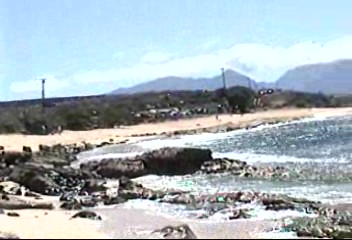
It was a gorgeous day on Maui. We meandered around, stopping in Kihei to enjoy the ocean, but spotted no whales. Our hotel was located there, and because of our early day and the jet lag, we lounged around a bit in the late afternoon and caught up on sleep and email before an early night.
